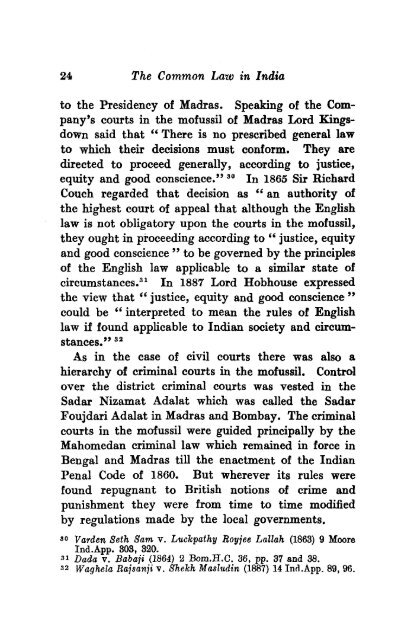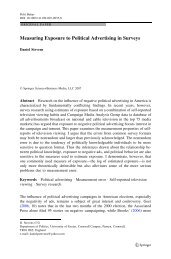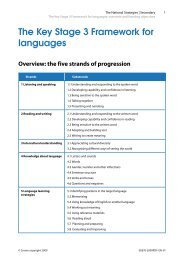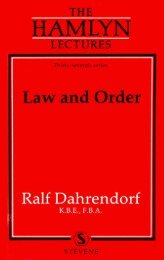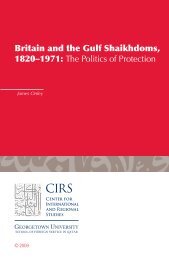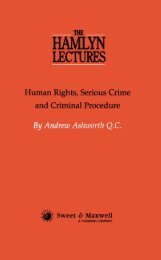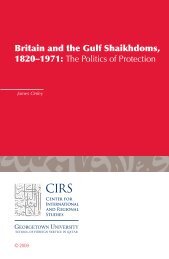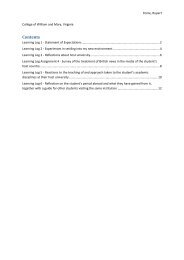- Page 5 and 6: THE HAMLYN LECTURESTWELFTH SERIESTH
- Page 7 and 8: The Common Lawin IndiaBYM. C. SETAL
- Page 9 and 10: CONTENTSThe Hamlyn Trust - - - - -
- Page 11 and 12: THE HAMLYN TRUSTTHE Hamlyn Trust ca
- Page 13 and 14: CHAPTER 1THE RISE OF THE COMMON LAW
- Page 15 and 16: The Rise of the Common Law 3mixed u
- Page 17 and 18: The Rise of the Common Law 5In orde
- Page 19 and 20: The Rise of the Common Law 7and Cou
- Page 21 and 22: The Rise of the Common Law 9observe
- Page 23 and 24: The Rise of the Common Law 11Thus w
- Page 25 and 26: The Rise of the Common Law 13the ch
- Page 27 and 28: The Rise of the Common Law 15includ
- Page 29 and 30: The Rise of the Common Law 17from t
- Page 31 and 32: The Rise of the Common Law 19Suprem
- Page 33 and 34: The Rise of the Common Law 21prefer
- Page 35: The Rise of the Common Law 28made a
- Page 39 and 40: The Rise of the Common Law 27one to
- Page 41 and 42: The Rise of the Common Law 29the ru
- Page 43 and 44: The Rise of the Common Law 81Later
- Page 45 and 46: The Rise of the Common Law 33The fi
- Page 47 and 48: The Rise of the Common Law 351872 o
- Page 49 and 50: The Rise of the Common Law 37crimin
- Page 51 and 52: The Rise of the Common Law 89requir
- Page 53 and 54: The Rise of the Common Law 41King's
- Page 55 and 56: The Rise of the Common Law 48steps
- Page 57 and 58: The Rise of the Common Law 45as its
- Page 59 and 60: The Rise of the Common Law 47The sy
- Page 61 and 62: The Rise of the Common Law 49Suprem
- Page 63 and 64: The Rise of the Common Law 51arbitr
- Page 65 and 66: The Rise of the Common Law 53has be
- Page 67 and 68: The Rise of the Common Law 55As ear
- Page 69 and 70: The Rise of the Common Law 57by equ
- Page 71 and 72: The Rise of the Common Law 59with c
- Page 73 and 74: The Rise of the Common Law 61princi
- Page 75 and 76: CHAPTER 2CIVIL LAWTHE first Law Com
- Page 77 and 78: Civil Law 65country of the parties
- Page 79 and 80: Civil Law 67be made by a will execu
- Page 81 and 82: Civil Law 69advancement based on En
- Page 83 and 84: Civil Law 71as to accommodate it to
- Page 85 and 86: Civil Law 73to contracts." The cour
- Page 87 and 88:
Civil Law 75Consideration may under
- Page 89 and 90:
Civil Law 77similar to those of the
- Page 91 and 92:
Civil Law 791845" did not, however,
- Page 93 and 94:
Civil Law 81in the same case that '
- Page 95 and 96:
Civil Law 83a mistake of fact but a
- Page 97 and 98:
Civil Law 85could not prevent, unla
- Page 99 and 100:
Civil Law 87and also a provision to
- Page 101 and 102:
Civil Law 89Act. 57 Speaking of the
- Page 103 and 104:
Civil Law 91the legal relations of
- Page 105 and 106:
Civil Law 93the non-performance of
- Page 107 and 108:
Civil Law 95purchaser who is suing,
- Page 109 and 110:
Civil Law 97system on which the Act
- Page 111 and 112:
Civil Law 99Some of the provisions
- Page 113 and 114:
Civil Law 101The justification for
- Page 115 and 116:
Civil Law 108On the contrary, as we
- Page 117 and 118:
Civil Law 105to the contrary as ins
- Page 119 and 120:
Civil Law 107patents, copyright, bi
- Page 121 and 122:
Civil Law 109from the social duties
- Page 123 and 124:
Civil Law 111early as 1872 that in
- Page 125 and 126:
Civil Law 113in India. 16 However,
- Page 127 and 128:
Civil Law 115Dealing with the quest
- Page 129 and 130:
Civil Law 117textbooks was codified
- Page 131 and 132:
Criminal Law 119criminal law were b
- Page 133 and 134:
Criminal Law 121powers; though the
- Page 135 and 136:
Criminal Law 123legal member, full
- Page 137 and 138:
Criminal Law 125" It is working as
- Page 139 and 140:
Criminal Law 127law. Stephen though
- Page 141 and 142:
Criminal Law 129proposed that truth
- Page 143 and 144:
Criminal Law 131calendar of crimes
- Page 145 and 146:
Criminal Law 133religious life of I
- Page 147 and 148:
Criminal Law 135have also in the In
- Page 149 and 150:
Criminal Law 137a special meaning.
- Page 151 and 152:
Criminal Law 139I think, depend upo
- Page 153 and 154:
Criminal Law 141at a conclusion whe
- Page 155 and 156:
Criminal Law 143and coercion. Some,
- Page 157 and 158:
Criminal Law 145Infancy: Moral deli
- Page 159 and 160:
Criminal Law 147It was laid down in
- Page 161 and 162:
Criminal Law 149provides expressly
- Page 163 and 164:
Criminal Law 151her husband who is
- Page 165 and 166:
Criminal Law 153by the ancient rule
- Page 167 and 168:
Criminal Law 155In India it is prov
- Page 169 and 170:
Criminal Law 157fall in Indian law
- Page 171 and 172:
Criminal Law 159wages war against t
- Page 173 and 174:
Criminal Law 161in the Indian Code.
- Page 175 and 176:
Criminal Law 163Large powers have b
- Page 177 and 178:
Criminal Law 165of certain offences
- Page 179 and 180:
Criminal Law 167as in England but t
- Page 181 and 182:
The Indian Constitution 169time to
- Page 183 and 184:
The Indian Constitution 171forces i
- Page 185 and 186:
The Indian Constitution 173the gene
- Page 187 and 188:
The Indian Constitution 175the cour
- Page 189 and 190:
The Indian Constitution 177Bills to
- Page 191 and 192:
The Indian Constitution 179head and
- Page 193 and 194:
The Indian Constitution 181of its c
- Page 195 and 196:
The Indian Constitution 183This vit
- Page 197 and 198:
The Indian Constitution 185authorit
- Page 199 and 200:
The Indian Constitution 187The comm
- Page 201 and 202:
The Indian Constitution 189of the p
- Page 203 and 204:
The Indian Constitution 191came int
- Page 205 and 206:
The Indian Constitution 193function
- Page 207 and 208:
The Indian Constitution 195rendered
- Page 209 and 210:
The Indian Constitution 197remedies
- Page 211 and 212:
The Indian Constitution 199India ha
- Page 213 and 214:
The Indian Constitution 201establis
- Page 215 and 216:
The Indian Constitution 203expressi
- Page 217 and 218:
The Indian Constitution 205It is st
- Page 219 and 220:
The Indian Constitution 207in Engla
- Page 221 and 222:
The Indian Constitution 209it means
- Page 223 and 224:
The Indian Constitution 211otherwis
- Page 225 and 226:
The Indian Constitution 213to prote
- Page 227 and 228:
The Indian Constitution 215use, enj
- Page 229 and 230:
The Indian Constitution 217natural
- Page 231 and 232:
The Indian Constitution 219health a
- Page 233 and 234:
The Indian Constitution 221are not
- Page 235 and 236:
The Indian Constitution 223In its p
- Page 237 and 238:
Epilogue 225exactly for the same re
- Page 239:
Epilogue 227it, and professors medi


